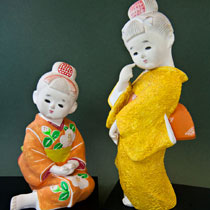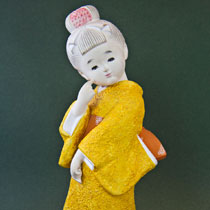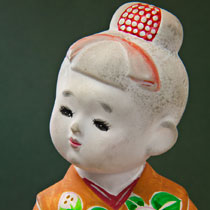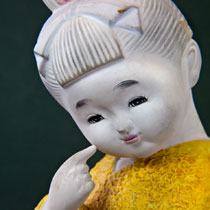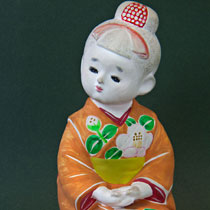Description of Figure/Doll
Ceramic statues of Japanese dolls wearing painted kimonos. One of the figures is standing, and she is wearing a yellow kimono with orange sash. The other figure is in a seated position, with a flowered kimono. Both girls are wearing hair ornaments (kanzashi) that are traditional in Japanese culture. Kimonos are robe-like dresses traditionally worn in Japan. Kimonos are usually floor length and have collars and long sleeves. They are wrapped around the body and secured with a wide sash (called an obi).
Link to higher resolution images at ClipPix
Japan
Location: Asia
Capital: Tokyo
Main language: Japanese
Currency: Japanese Yen
Figure/Doll
Construction: ceramic
Height in Centimeters: 18
Height in Inches: 7
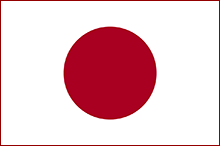

Onna-Bugeisha: Female Samurai in Japanese History
Reading Level: 5.40
My name is Sumi. I am 12 years old and live in rural Japan. Many years ago, my great-great-grandfather was a Samurai. The Samurai were Japanese warriors who fought evil with their swords, brains and armor.
.
I always thought all Samurai warriors were men, but my father told me that was not true. “At one time,” he said, “some women were also trained to fight. These women were called Onna-Bugeisha. Sometimes they fought with the men. Sometimes they protected the villages when the men were away. Their favorite weapon was the naginata—a long spear with a curved blade.” When I heard this, I asked, “Could I ever become such a warrior?” He smiled at me and said, “We shall see.”
Being fascinated with the Sumurai, I asked him, “Why did these fighters wear such weird looking armor?” He replied, “Good question, young lady. The Sumarai armor was designed for mobility. It was not very heavy, and they could easily ride horses and fight.” “But, Dad, why did they wear such strange head gear?” I questioned. My father laughed and explained, “Their helmets were called Kabuto helmets. It protected their heads and faces from arrows and swords. Sometimes the ugly masks would actually scare the enemy.”
By now it was late, and mother called out, “It’s time for dinner.” Our meal consisted of white rice along with fish, soup and pickled vegetables. In our culture, we eat everything with chop sticks (except the soup). We drink the soup out of the bowl, without a spoon. A little rice is saved until the end of the meal when it is eaten with the pickled vegetables. After eating, we say “Gochisosama,” which means “Thank you for the meal.”
The following day, I urged my father to tell me more about the Sumurai. He smiled said, “Did you know the Samurai were “rock stars” of their time? Many people copied their style of clothes. Some even copied the Samurai hair style with a top knot.
That night I had a dream. I dreamt that I was a young Onna-Bugeisha living many years ago. One day when the Samurai men were away, I had to help protect our village. The enemy was a very large man who was trying to steal our cattle. I quickly put on my armor and grabbed my naginta. I walked for many miles to where the man had last been seen. In the darkness, I saw a fire burning in the forest. It was him. He was much bigger than me, and he was wearing armor. My plan was to act like an evil ghost and scare him with my mask. I was praying this would work. I crept very close to his fire. Just as he was to take a bite of his food, I ran towards him screaming at the top of my lungs. At the same time I was waving my naginta dangerously close to his frightened face. With a horrifying look on his face, the giant leaped to his feet and began running. I chased him until he disappeared into the forest.
At that moment, I was wide awake and realized it was a dream. I decided that in the morning I would ask my father to teach me more about Onna-Bugeishas.

